Skagit WSR - Recreation

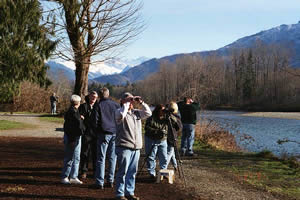
Tall tales of adventure unfold as we look into the past along the Skagit Wild and Scenic River System. Ancient peoples followed the rivers in rhythm with the seasons, supported in their lifestyles by the riches of the natural world. A pioneering spirit drew others here in search of gold, fur and timber. Settlers embraced a way of life connected to the resources. This life continues today faced with new challenges and rewards. As you travel throughout the river system experience the unique character of each segment: the Skagit, Cascade, Sauk and Suiattle. Each river has its own complex communities, resources, histories and people to discover.
WHAT TO DO
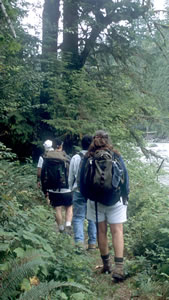
Whether you want to shoot the rapids on a whitewater rafting adventure or leisurely paddle a canoe in serene waters, the Skagit Wild and Scenic River System provides some of the most outstanding boating opportunities in the Pacific Northwest. The four rivers offer a range of conditions and challenges for the novice as well as the more experienced river user. A number of guides provide opportunities throughout the year to enjoy the river system.
Attractive campsites, easily accessible by water or land, are located along the rivers. Hiking trails lead into forest and mountain settings of unsurpassed beauty. Day use picnic areas and viewpoints along picturesque travel routes offer opportunities to interact with this extraordinary place. Summary of recreation sites
Wildlife abounds within the watersheds. Birdwatchers flock to the Skagit River during winter months when one of the largest populations of bald eagles in the lower 48 states can be found feeding on the salmon runs. Hunting and fishing are regulated by the Washington State Department of Fish and Wildlife. Common species to be found along the river system are deer, black bear, elk, waterfowl, salmon and trout.
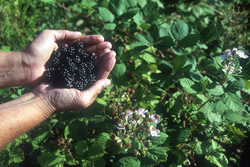
SEASONS OF USE
Weather in the Pacific Northwest can change rapidly any time of the year. Summer temperatures average around 60-70 degrees F, winter temperatures average 30-40 degrees F. As temperatures cool during the fall and winter months, snow levels may come down to lower elevations, sometimes gracing the banks of the river system. Hiking and camping opportunities may be limited during the late fall and winter months.
WHERE TO STAY
Accommodations range from rustic campgrounds to cabins, motels and bed and breakfast inns. Visitor Information Staff at national forest and park facilities can help plan your visit. In addition, a full complement of resources about overnight facilities may be available from local chambers of commerce and other travel services. Call 1-877-444-6777 to reserve sites at national forest campgrounds or reserve on-line at www.reserveusa.com. Make reservations for Washington State Parks at 1-888-226-7688.
PASSES AND PERMITS
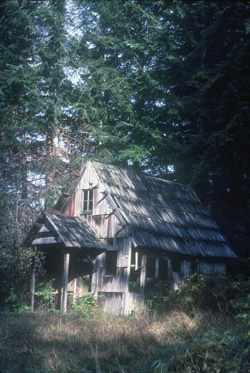
- Check with local ranger station for current information.
- Recreation Pass parking permits are required at posted recreation sites in the Mt. Baker-Snoqualmie National Forest and certain trailheads in North Cascades National Park Service Complex.
- Campground fees are charged separately at each recreation site.
- Commercial and non-commercial use of the national forest and the national park for purposes such as filming, outfitter guides, or research, requires the processing of a Special Use Permit. List of permitted Rafting Guides.
- National forest permits for firewood and other forest products are available on a very limited basis. Permits are issued on a first-come, first-served basis and must be prepared in advance.
- In the national forest, collecting forest products such as mushrooms, ferns and boughs is limited to personal use. A national forest Product Permit must designate collection of large quantities.
- Mushroom collecting is prohibited in the North Cascades National Park Service Complex.
ENJOY YOUR VISIT
You can be a responsible river user and help take care of this unique place. By following rules and regulations developed for your safety, you can assist with efforts to provide long-lasting protection of resources along the river system.
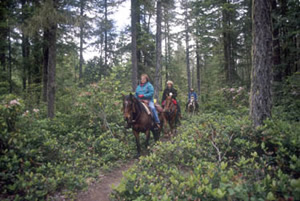
Trespassing
Land along the Skagit Wild and Scenic River System is both public and private. Please respect the rights of property owners and do not trespass.
Sanitation
Please use designated public restrooms when available. If you plan to visit public lands without facilities, dig a hole 4-6 inches deep at least 200 feet from campsites and water sources to help stop the spread of bacteria.
Bathing and Dish Washing
Wash away from your campsite and at least 200 feet from any water source. Use only biodegradable, nonphosphate soap or, better yet, no soap at all. Dig a small hole to strain dishwater into, and then cover back up.
Trash
Use receptacles provided in developed recreation areas or pack out what you bring with you. Do not dump in or along the river system.
Boating Safety
Wear your life jacket. Do not boat alone and leave trip plans with a responsible person. Alcohol can impair judgment. Do not drink and boat on the rivers. Choose a craft that is appropriate for the stretch of river you are exploring. Check flow levels before heading out and avoid high waters during periods of runoff and glacial melt.
Help Minimize Impacts to Wildlife
While boating, please do not stop along the Skagit River throughout the winter months to avoid disturbing spawning salmon and bald eagles. A voluntary closure is in effect from the Rockport Bridge to the Marblemount Bridge, December 26-February 28, during peak eagle feeding times of 5:00 a.m. to 11:00 a.m. daily.
Alerts & Warnings
- Mallardy Ridge Trailhead and FSR 4030 and 4032 Closure
- Harris Lake Trailhead and FSR 5510 Closed
- Middle Fork Camping Closure
- Delays possible on PCT at the Summit at Snoqualmie Ski Area
- FSR 4110 Road Closure
- Camping Restrictions
- Fireworks and Explosive Targets Prohibition
- Read this Before Climbing or Backpacking on Mt. Baker
- Hwy 542 Closed to Artist Point
- New food storage rules for Mt. Baker-Snoqualmie NF
- Alcohol Prohibitions

